This piece was originally prompted by a discussion I had with some friends, with the core question being: Is it worth it to buy a cheap new car? After all, for new Nissan Versa or Mitsubishi Mirage money, you could get something faster, more comfortable, more efficient, and less embarrassing. If you're strapped for cash, why buy a new cheap car when you could get a used car that gives you so much more? To try and find an answer to, or at least additional fuel for, this debate, I test drove a Versa S (5MT) and Kicks S (CVT), both of which share Nissan's subcompact platform, and share Nissan's (and Renault) 1.6L HR16DE engine.
The Versa


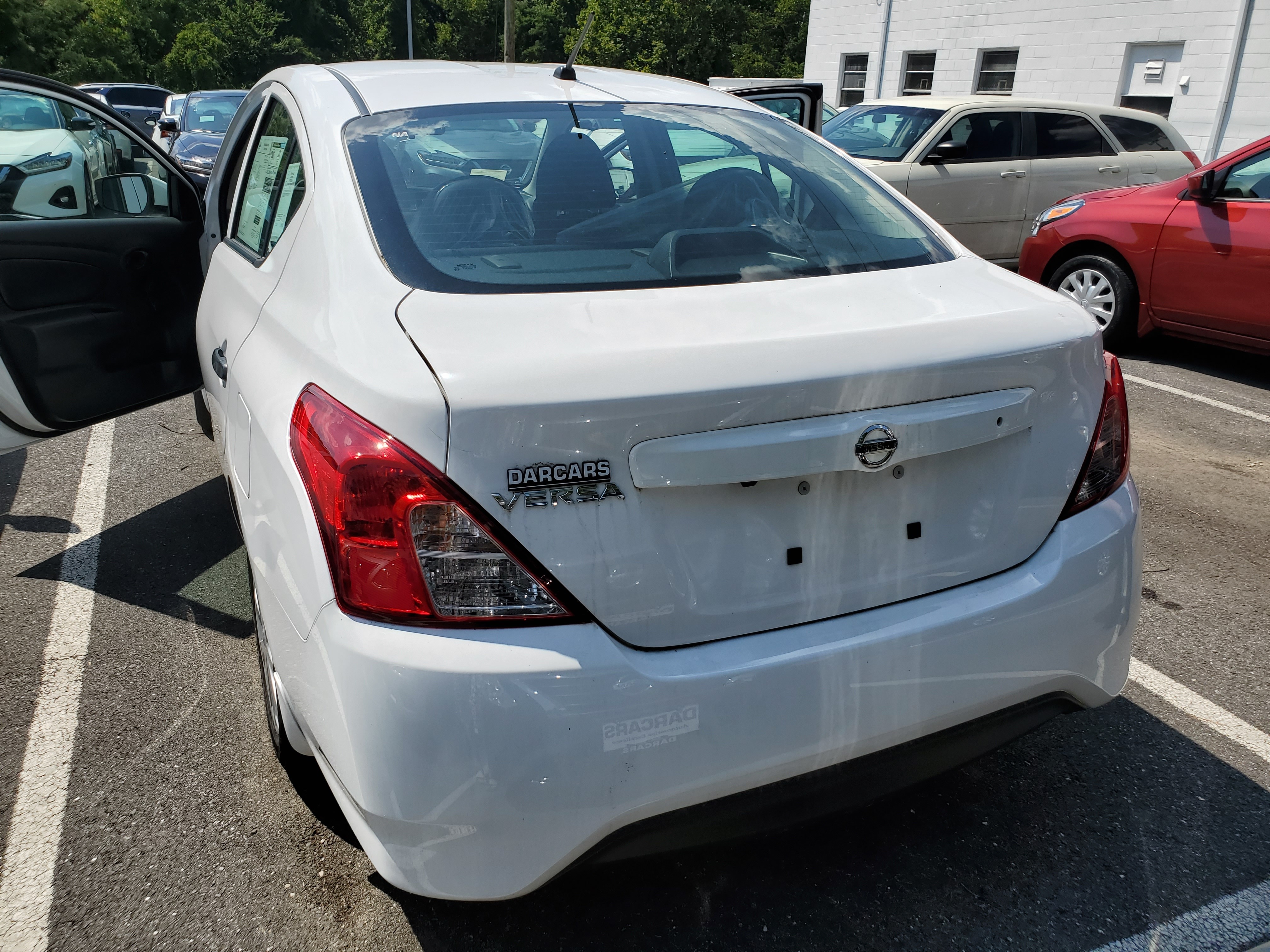
To the best of my knowledge at the time of writing this, the Nissan Versa S 5MT is the cheapest new car you can buy in America. The aforementioned Mirage comes close, and other brands' subcompacts (Mazda2, Fit, Rio, Accent, et cetera) generally sit a bit higher in the price range. This does not mean that the Versa is lacking in features perhaps, but it is clearly a car of compromises. It should be obvious to the reader that $14,000 only gets you so much for a new car.
The Versa makes a point of not necessarily omitting anything in order to cut costs: It features the now-obligatory backup camera (rudimentary, with static guidelines), and therefore a touchscreen-equipped infotainment console, air conditioning, USB connectivity for smartphone devices, cruise control, and some very impressive fuel economy figures. The functionality is all there, but as one might expect, the difference in quality is in how the features were executed, rather than which features were chosen.
The Versa boasts an impressive amount of space for such a small car, with generous headroom in front and rear, a large trunk, and respectable legroom all around. The steering wheel only tilts and the windows are manual rather than electric, which came as a surprise for a 2019 car, but if you're the kind of person that feels that electric windows are an unreliable luxury, look no further than the Versa. Interior storage is adequate, with a couple cupholders and storage bins available to the front seats, and the use of the floor easily accessible for passengers in the rear. The steering wheel feels exactly like every rental car you've ever driven, as do the steering column stalks, the HVAC controls, and the seats.
The steering assist isn't too obtrusive, so low-speed steering isn't feather-light, and seems reasonably sensitive at higher speeds. The shift knob for the manual transmission is oddly large and does not have a reverse lockout (I presume this means installing an aftermarket one wouldn't be too hard, if that catches your fancy), but the shifter moves smoothly through its long throws. The engine's throttle response is slow, but the engine is very smooth, perhaps the smoothest inline-4 I have so far driven. The brakes feel unresponsive for such a light car, but will work if forced. Remember: the Versa isn't a sports car. This is a car that takes little concentration to drive and sips gas doing it.
I see little point putting any extra detail into my views on the physical nature of the Versa: It's a cheap small car; cheap to buy, cheap to run, cheap to fix. This car is exactly what you expect it to be (though I will admit its engine felt much smoother than I expected). However, it's easy to play off budget subcompacts like the Versa as jokes, or rental cars you have to pay insurance on, or depressing to drive, or any number of other trite comments car enthusiasts like to make about economy cars. That's not fair. It's not fair to the car, it's not fair to the engineers and designers who built it, and it's not fair to the people who buy them. This is because there is no such thing as a low-performance car.
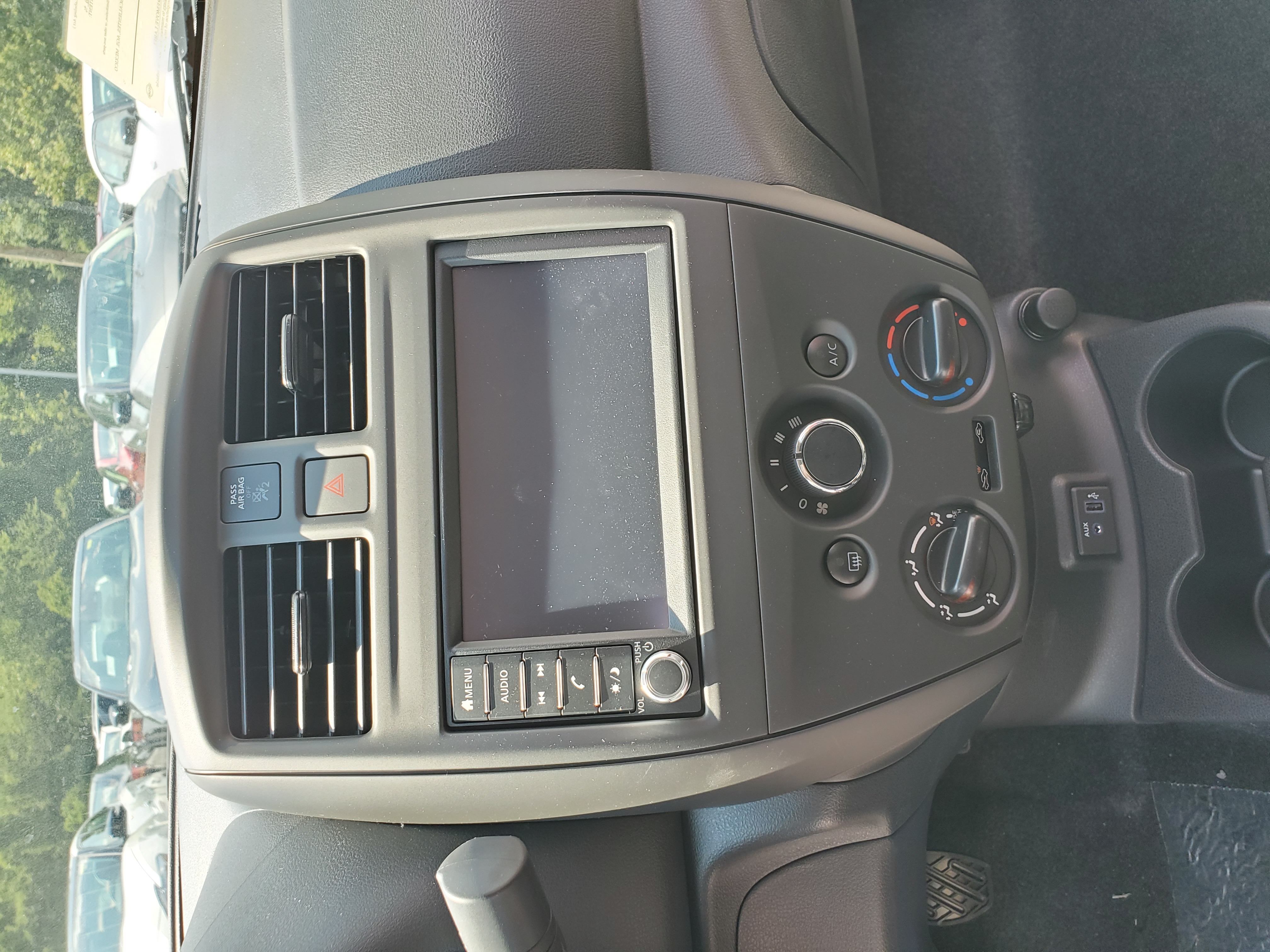
What does car performance really mean?
"No such thing as a low performance car" is probably a little radical for me to say as a car enthusiast, so I'll explain: Metrics of performance that cars are judged by, in the context of the real-world auto industry, as opposed to on the Top Gear test track, do not solely include acceleration, braking, and cornering speeds. As are all things that are bought and sold in a market economy, metrics beyond the pure function of the item contribute to its appeal or lack thereof. Fuel economy is a performance metric. So is price. So are insurance premiums, and passenger space, and headroom, and towing capacity, and quality of the infotainment OS, and visibility, and seating position, and how it makes you feel. When judged fairly, as products to be bought and sold, we see that no car truly excels in any particular performance characteristic without compromising on others. Yes, I hear you, Tesla drivers: your car is spacious, and fast, and efficient, and comfortable. It also compromises on price and on the fact that you have to be seen in public driving a Tesla.
The Dodge Charger is not necessarily a high-performance car. It is fast, and comfortable, and spacious, but is also inefficient, slower than other cars at its price point, less comfortable than other cars its size, and compromises on interior design details and materials in order to keep a reasonable price point. This doesn't make it bad, it just makes it unique. The Kia Niro isn't a low-performance car: It is hugely efficient, quick enough for a compact crossover, quiet, and feels more expensive than it is. On the other hand it lacks practical room for anything other than people, it's heavy, and is also very expensive on a dollar-per-cubic-foot basis, and feels a little lackluster compared to high-end compact crossovers. The Nissan Versa is therefore not necessarily a bad car, though it is cheap, and slow, and has windy windows, and has a transmission that feels like stirring a bucket of melted ice cream. It is also very affordable, not only for consumers, but also for local governments, rental agencies, driving schools, and other fleet buyers. It is very efficient, very easy to drive, and handles bumps and rough road surfaces very well for a car of its size. But the Versa offers something else as well: Being a very affordable new car, it offers dignity. It allows people who refuse to consider older used cars, or used cars at all, a new car, that they are the first owner of. It lets people drive their own car for the first 500 miles, or whatever their car honeymoon milestone is. As inefficient or exploitative or downright foolish the pageant of buying a new car may be, it is also a cultural tradition that we put a lot of stock in. Being able to haggle with a dealer, taking a test drive, ogling the Kia Stinger you'll never buy, these are all traditions for us. Car dealerships have become a pseudo-religious space where we reenact the same language and conversations and rituals over and over again, searching for artifacts that let us create meaning, or impose meaning we already hold. Car dealerships, particularly new car dealerships, where things are brought into the world, fresh and young, still swaddled in factory protective wrapping and reeking of glue, are temples to our worship of the open road, and the promises it offers.
But I digress. In any case, the Nissan Versa is a car that largely lacks the capacity to surprise. It feels like a 2009 car rather than a 2019 car, but that's not necessarily bad: Not everyone likes the trend towards what some would call overdesigned or overly pretentious car design. The 2019 (Since 2020 brings in a new generation whose styling is more in line with Nissan's overall theme) Versa has nothing to prove. If you need a new car, and all you want is efficiency, a low price tag, and a 3.5mm jack for your phone, the Versa may well be right up your alley. Parents, consider getting your child a Versa as their first car. It'll be cheap for them to run and it's slow enough to prevent them from getting into trouble (at least trouble that doesn't involve trays under the back wheels).
Now what if you have Versa money and you're standing in the Nissan dealership, ready to carry out the ritual and genuflect for the highway gods, but you think the Versa is a little boring, a little too caught up in its own station to reach for something better? You look to your left, past the Versa Note, and your eyes lock on to:
The Kicks.
The Nissan Kicks is Nissan's new entry in the highly contentious subcompact crossover, weighing in next to the HR-V, the C-HR, the CX-3, and a whole crowd of other options, including the Mini Countryman I reviewed last. The Kicks replaces the quirky and offbeat Juke and Cube, making Nissan's subcompact offering a little safer, a little more normative. The Juke was always meant to be weird (I believe it pioneered the trend of putting headlights in the bumper, below the driving lights), and people didn't really want the Cube, with its low ground clearance and a-little-too-weird styling and identity. The Kicks represents Nissan playing it safe and trying to "get with the program" of the subcompact crossover trade. This unfortunately means that subcompact crossovers have gotten a little less weirder, but such is the nature of the free market: Given a long enough timespan, all competing entries in a market with adapt to mimic the most successful, or most distinctive one, leading to compact sedans that are all shaped like the 2006 Civic, laptops that all look either like a Mac or an Alienware, and apartment complexes that all share the same particleboard modernism.
The Kicks, as mentioned before, shares the Versa's chassis engineering and its engine. The Kicks however has a taller ride height (still using the torsion beam rear suspension) and a revised intake system that lets its 1.6L engine make 122hp to the Versa's 109. Like many subcompacts the Kicks uses a CVT, and like many crossovers, there is not a manual transmission available for the US market. That said, 5MT-equipped Kicks' (Kickses?) likely use the same transmission as the Versa, so expect long gear spacing and pretty long shifter throws.
For such a small car, the Kicks is remarkably spacious: The boot area is surprisingly large, and there is plenty of headroom in the back seat. Tall adults will feel slightly cramped in the back seat if the driver is also tall, but the back row is deep enough to be practical for carrying people. The roofline looks low and sleek, aided by Nissan's current styling that visually continues the windows all the way back to the rear of the car, but is quite tall in reality: the Kicks does a good job of looking sporty without looking angry.
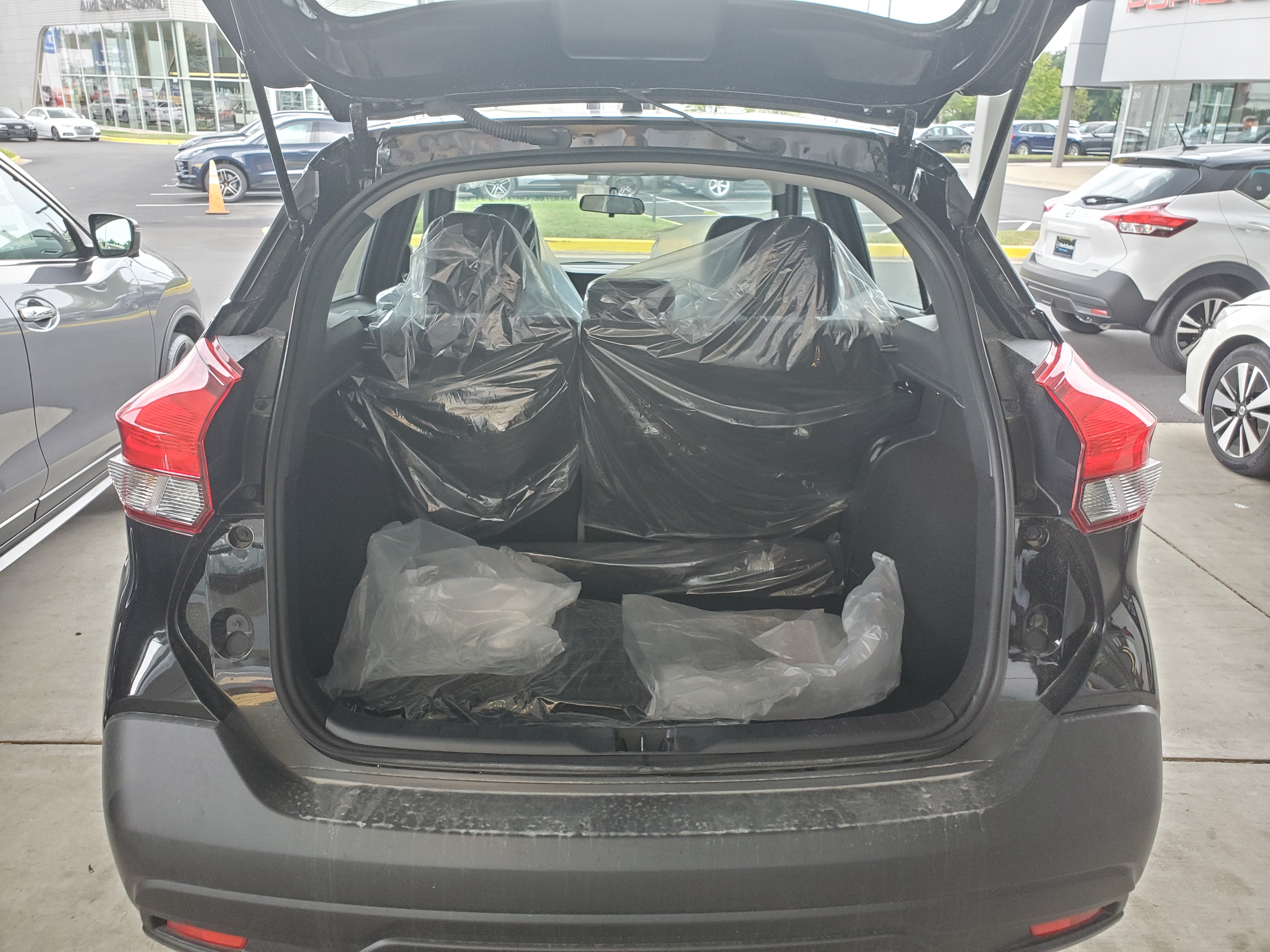
The Nissan Kicks partially bucks the trend of modern economy cars looking angrier and angrier: I mentioned previously that I believe this to be a reaction to the increasing popularity of crossovers. With crossovers and SUVs becoming the default family car/daily driver, sedans need to work harder to stand out as anything other than the dowdy status quo. Hence, every new sedan has to look like a sports sedan. They all have to be wannabe 3 Series, with twin exhausts and fake diffusers and "driver-centric" interiors and edgy front clip designs and low-slung bodywork. Nissan's own Altima and Maxima are good examples of this: The sedan of 2019 is a long, low thing, with a Sport mode that makes you feel like you're on an episode of Top Gear. This is not necessarily a bad trend, but some might call it dishonest: Is it disingenuous for economy cars to play at being anything that just that, economy cars? Or are we at the point in car development where all cars handle well enough that normal sedans simply are sports sedans? Either way, crossovers are somewhat immune to the sport-ification of family sedans, being the market force that is driving that styling transformation in the first place. We see crossovers as innovative and disruptive (to use the language of venture capital), and as possessing quirks and personality that simple sedans lack somehow. Crossovers have the freedom to look how they please, because the expectations we have for crossovers are so accommodating that they can win no matter what they do. This means that both weird crossovers, like the late Nissan Juke and the Toyota C-HR, are as acceptable as safe crossovers that avoid rocking the boat, like the Chevrolet Equinox and Honda CR-V. The Kicks, called into action to replace the subcompact Juke and Cube, could win no matter what styling paradigm it picked, and Nissan decided to forgo both weird and mainstream to make it plain cute instead. The Kicks' small grill and bulging headlights call back to the cutesy, anthropomorphic styling of the late 90s, and its tall stance and beltline make it look energetic, and in the subcompact segment, looks mean more than performance.
I have two admissions to make regarding my testing of the Kicks and my conclusions about it. One is that I fully expected to hate it. I was prepared before I even laid eyes on it to hate it. I knew it would be tall and slow. I knew the CVT would have no manual mode and would shuffle the car around awkwardly. I knew that everything would feel a little bit cheap inside and I knew that being so high off the ground would harm my confidence in the vehicle's handling. This was an admittedly unprofessional way to feel coming into a test drive, but it is the truth. Second: I love the Kicks. After driving it on Herb Gordon Nissan's test route, I found myself genuinely appreciating its quirks and personality. I did not expect to love the Nissan Kicks as much as I do, but I honestly do not believe it is possible to get behind the wheel of one and not smile.
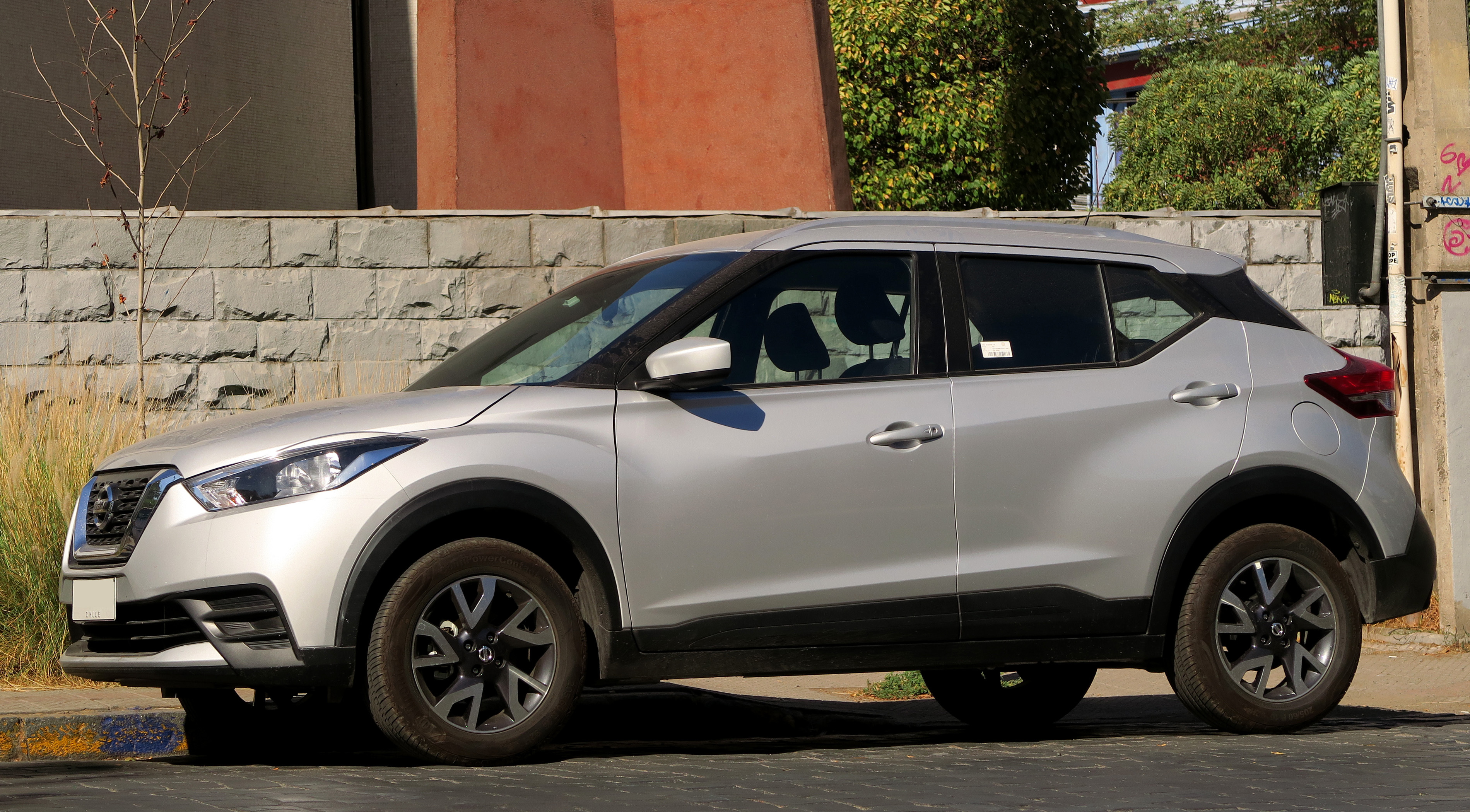
Why did I like a subcompact crossover so much?
As I mentioned, Nissan worked hard to make the Kicks look charming rather than intimidating, friendly rather than aggressive or domineering. Many crossovers promise control, or safety, or comfort with their styling and UX design: The Kicks does nothing of the sort. Many crossovers make overtures at being offroad vehicles, but anybody can tell the most they'll ever do is drive across a grass field to park at a dog agility tournament. Many newer crossovers even try to seem like what they aren't like the coupe-like styling of the Toyota C-HR and the Honda HR-V, with their hidden rear door handles. The Nissan Kicks does not try to pretend like it is anything other than your friend. The cute yet unique styling gives it character enough to look at and see a car with its own identity, and the plethora of styling accent options (white roof, different color trim pieces), allow the user to project their own sense of style onto their car in a more in-depth way than most cars do. Serious consumer advice: If you get a Nissan Kicks, please check out the cosmetic options. Yes, the orange mirrors and bumper accents might cost extra, but all of your friends will love it. They will make your car look special and you will feel that. Do it.
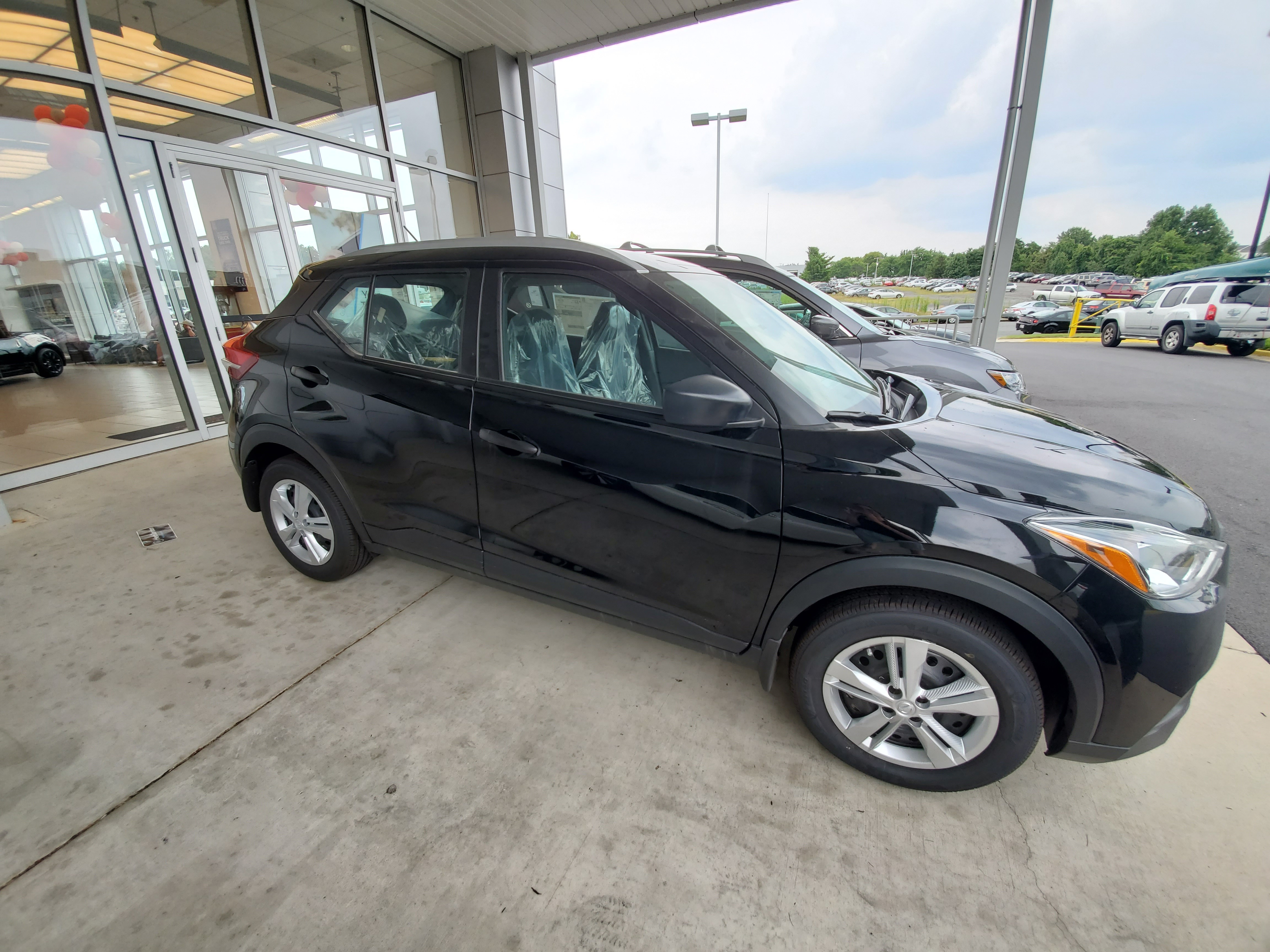
The Kicks backs up its friendly facade with a friendly personality too. Remember that engine I was so prepared to be disappointed by? Same as the Versa, it's incredibly smooth, with all higher-frequency vibrations being well damped. The cabin is remarkably quiet for a car of this size. I am still frustrated that the Kicks does not have a manual shifting mode, but I must also admit to myself that the majority of the userbase of this car would never use that. However, I feel that all cars should offer the driver some choice over the shifting paradigm, be it a CVT with a Sport mode like Honda does, or a set of discrete fake "gear" ratios like Subaru does with their CVTs. This is my one big complaint over the Kicks, Nissan: Replace the "L" shifter detent with a Manual mode and put paddles on the wheel or something. Please. It would make your already charming car even more fun. It is my belief that a manual shifting mode is a very important feature and failing to implement it is user-hostile. I digress, however, letting the transmission make its own shift decisions works fine in practice. The engine always stays quiet unless you really ask it to work, and the transmission keeps it spinning slow and sipping fuel. The Kicks' fuel economy is surprisingly good, and good enough in the city for me to commend it as a city car. fueleconomy.gov ranks the Kicks as having 31mpg city and 36mpg highway, both very impressive figures for a tall, boxy crossover. The transmission does some fake upshifts when accelerating, which could be good or bad depending on your preference, but it doesn't bother me personally. Passing without a manual kickdown is the typical economy car appraoch: Mash the accelerator, signal left, and then merge over when the torque actually hits. Overall, the Kicks' powertrain overall feels like a sensible economy car setup, and has no surprises in store for the driver.
The brakes are a little light, but have more than enough force available. The rear drums might get warm on long downhills, but outside of that, they perform fine. Steering wheel feel is also light, being an electric system, and makes parking maneuvers effortless: Between the grippy steering wheel material and strong power assist at low speeds, palm-steering is quite doable. At cruise speeds, steering is a little less sensitive than I might like, but is well within the bounds of economy car expectations. The suspension handles bumps and potholes very well, and soaks up road surface vibration effectively: However, body roll is pronounced, and I didn't have much confidence in the Kicks' ability to cling to the road. With a lower stance and a stiffer rear torsion beam, it might acquit itself better, but as it is now, it is comfortable to drive in normal situations. Everything about the Kicks' ride and handling really functions to reinforce sensible economy car driving techniques: Slow down well in advance for corners, don't apply power until you've straightened the front wheels, don't bother swerving around manholes and potholes, as the suspension will absorb most of the shock. As with the Versa, the Kicks is a great car for inexperienced or less confident drivers.
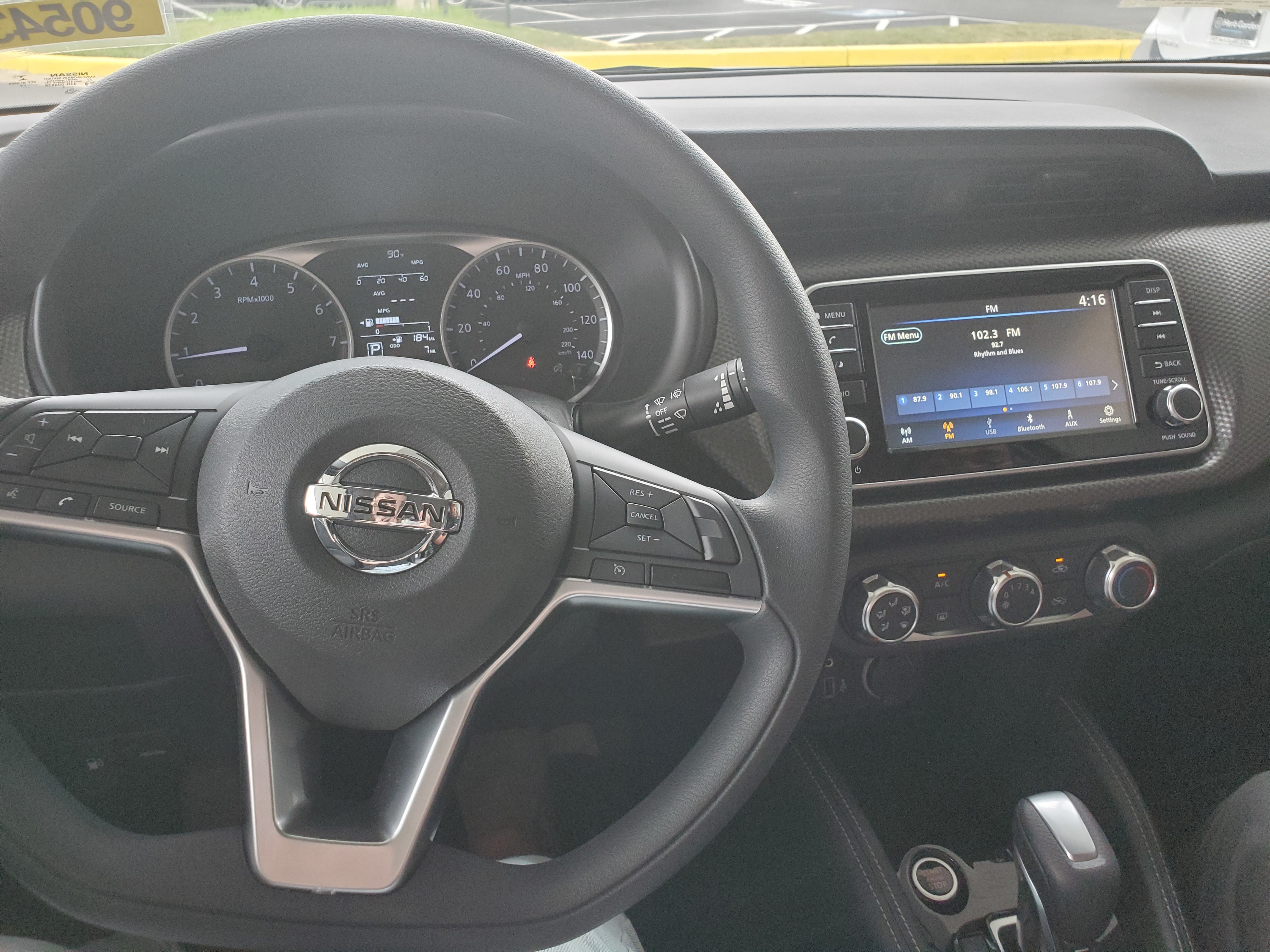

The various controls of the Kicks feel decent for its price point, and the interior materials are rather good. The dashboard is covered with a hard plastic checkerboard pattern that evokes carbon fiber, and most of the materials look fine, even if it is just plastic. Button placement is mostly logical, with media controls on the steering wheel and a sizeable touchscreen (somewhat larger than the Versa's, I believe). The base Kicks does not come with proprietary Apple or Android smartphone software, but does have three USB ports for charging phones, and I understand that the driver's port can also accommodate simple smartphone tasks like taking calls and playing music. The Kicks also features a forward collision warning sensor, as well as a backup camera, and higher trims get some other quality-of-life sensor upgrades as well. Overall, the Kicks' interior features are better than basic for 2019, and for most people, even the base model should have all the connectivity and gadgets that they need. The multifunction display on the gauge cluster even has a few different display options, and prominently features fuel economy, so hypermilers can work even harder to save gas. The Kicks, having been designed more recently than the 2019 Versa, has a more modern interior and feels like it takes itself a little more seriously: The introduction of the 2020 Versa will correct this disparity however, with the Versa finally catching up to Nissan's fleetwide styling and design paradigm.

I found the Kicks overall to be predictable, in a rather pleasing way. Some cars, like my 2006 Civic, are predictable in how they perform. I know how it accelerates, when it shifts, when the front tires start to let go in a corner, and I can design my driving style around that to make the most of it. The Kicks on the other hand is predictable in how it feels. This is a car that was carefully designed to not surprise you. Throttle response is soft at cruise and sensitive from a stop, as are most automatic transmissionc cars these days. The steering is light, predictably so, and the brakes make the car feel a little heavier than it really is. The interior feels sensible, and well appointed but not overly so, and the smaller than ideal windows make the car feel a little safer, at least for some. This is a car that you are meant to feel at home in: The Kicks makes sure to feel exactly how you'd expect a subcompact family car to. It's soft, forgiving, but nimble at the same time: It reminds you that even though it's small, it's still capable, and safe.
The Kicks does not look or feel to quirky, not does it perform in any particularly extraordinary ways: On the contrary, its entire user experience is designed around feeling ordinary and predictable. Ordinary makes us feel safe, and predictable makes us feel in control: While some SUVs promise control to their drivers, the Kicks delivers the sensation of having control. The Kicks is a car that looks and feels familiar yet unique enough to like, I think that's the core of its identity: It's likeable. The Kicks is a car that people will truly love, not for any peculiarities of its design or history, but merely because it feels friendly and reliable, while having just enough style and customizability for owners to project their own personalities and sensibilities upon it.
Overall, the Nissan Kicks is a very efficient subcompact crossover that packs a lot of features and space onto a very small footprint. It isn't fast and is no autocross beast either, but it is comfortable at all speeds and always feels controlled, and the tall stance makes it easy to get in and out of. If you need a car that sits up higher, either for ergonomic preferences or mobility requirements, the Nissan Kicks is a very strong offering, if you don't mind taking your time getting up to speed on on-ramps. This, as well as its personality, leads me to guess that there are a couple major use cases for the Kicks. One is of course for families and commuters who need a comfortable, efficient, good-value car and don't mind driving a crossover. The other is for fleet use. Think about it: It's extremely efficient, spacious, comfortable, and aggressively easy to drive. For jobs like parking enforcement, or as company/fleet cars to dispatch people and resources, the Kicks would be ideally suited. The humble fleet Chevy Cobalts and Aveos have finally found their match.
"Cheap" and "Bad" are not synonyms
Against my expectations, I was pleased by both of Nissan's subcompact budget offerings. The Versa is a subcompact that carries itself with dignity, and for beginning drivers and families who need a sedan on a budget, the Versa is a strong offering indeed: I believe that it represents an important tool for the mobility of less well-off Americans, considering that cars are effectively mandatory in the United States. The Kicks on the other hand is a thoroughly modern subcompact crossover, in all respects. Nissan made the Kicks a safer offering than the offbeat Juke and the cutesy Kei car-ish Cube, raising it up and giving it more familiar styling to lure in Americans who prefer more conservative, reserved designs. However, the Kicks feels approachable and looks friendly, and between its easy driving and the wide variety of very charming cosmetic options, it's overall a very likeable little car, and its fuel economy is, again, outstanding for a conventionally-powered crossover vehicle.
I would like to thank DARCARS Nissan of College Park and Herb Gordon Nissan in Silver Spring for allowing me to test drive the Versa and Kicks respectively. The staff of both were helpful and knowledgable and I could not have done these reviews without them.
And finally, is it better to buy a cheap new car or a used car that costs about as much or less? I can't really say: There is no objective answer. We choose our cars not purely based on price, or speed, or quality, or any other metric of performance: Ultimately, we pick our cars based on how they make us feel. If a $14k Versa feels better to you than a $14k used 3-Series, then get the Versa. The diversity of opinions about the media we consume and the material culture we engage with is where the "objectivity" of car reviewing breaks down: Remember that I am only one person, and the best way to learn about a car is to drive it for yourself. Cars aren't just appliances, they're texts, and anybody who tells you otherwise is definitely trying to sell you something. Probably a car, actually.